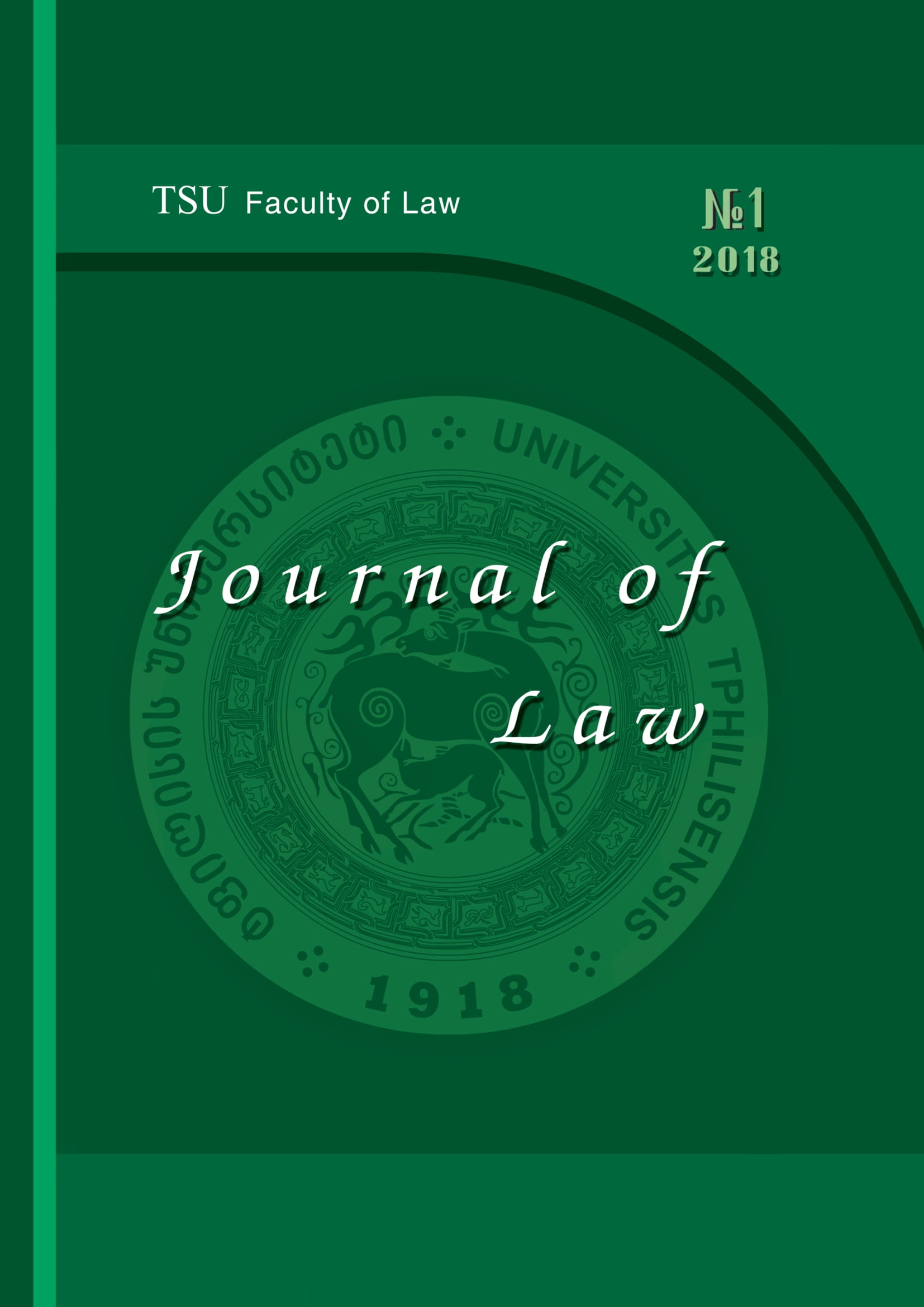Social Challenges of Artificial Intelligence: The Case of Lethal Autonomous System
Keywords:
Artificial Intelligence, Social Challenges, Lethal Autonomous SystemsAbstract
Artificial intelligence (AI) has the potential to transform our society in a way that is still difficult to predict but whose implications are going to be deeper than previous technological developments. For the first time in our history, we will be dealing with non-human intelligences, able to perform tasks with direct implications over our material reality with consequences that can even result in direct human casualties. Through this article, we will try to provide elements for the social debate that is structured around the future of AI and its relationship with humanity, by analysing some of the social challenges attached to its core, using the lethal autonomous systems as a paradigmatic manifestation of those risks. This article will present some of the main problems attached to the technology that underlines the urgent need for regulation and deeper analysis about its potential ramifications.
References
Alandete D., Necrológica: John McCarthy, el arranque de la inteligencia artificial, El País, 27.10.2011. Vid. Guillén B., El verdadero padre de la inteligencia artificial, OpenMind, 4.09.2016.
Arendt H., The Human Condition, University of Chicago Press, 2013.
Arrillaga J., Bollen M. H., Watson N. R., Power Quality Following Deregulation. Proceedings of the IEEE, 88 (2), 2000, 246-261.Asaro P., On Banning Autonomous Weapon Systems: Human Rights, Automation and the Dehumanization of Lethal Decision-Making, International Review of the Red Cross4, 2012, 687-709.
Balibar E., Wallerstein I. M., Wallerstein S. R. I., Race, Nation, Class: Ambiguous Identities. Verso, 1991.
Ballbe M., Martínez R., Soberanía dual y Constitución integradora, Barcelona: Ariel, 2003.
Ballbe M., Martínez R., Law and globalization: Between the United States and Europe, en J. Robalino, J. Rodríguez-Arana (eds.), Global Administrative Law, Londres: Cameron May, 2009.
Ballbe M., Seguridad humana: del Estado anómico al Estado regulador, prólogo a C. Hood et alii: El gobierno del riesgo, Barcelona: Ariel, 2005.
Barak A., Human Dignity. The Constitutional Value and the Constitutional Right, Cambridge, 2015. Barrat J., Our Final Invention: Artificial Intelligence and the End of the Human Era. Macmillan 2013.Bates T., Gramsci and the Theory Of Hegemony, Journal of the History of Ideas, 32(2), 1975, 351-356.
Battistutti, Cairo O., El hombre artificial: el futuro de la tecnología, México DF: Alfaomega, 2011.
Baudrillard J., Simulacra and simulation. University of Michigan press, 1994.
Beine M., Parsons C., Climatic Factors as Determinants of International Migration, The Scandinavian Journal of Economics, 117(2), 2015, 723-767.
Bhaskar R., Reclaiming Reality: A Critical Introduction to Contemporary Philosophy. Routledge, 2010.
Bostrom N., A History of Transhumanist Thought, Journal of Evolution and Technology, 14(1), 2005, 1-25.
Bothmer F. Von, Robots in Court: Responsibility for Lethal Autonomous Weapons Systems, en Brändli S., Harasgama R., Schister R., Tamò A. (eds.), Mensch und Maschine – Symbiose oder Parasitismus?, Berna: Stämpfli, 2014.
Braidotti R., Posthuman, All Too Human: Towards a New Process Ontology. Theory, Culture & Society, 23(7-8), 2006, 197-208.
Browne R., Elon Musk Warns A.I. Could Create an ‘Immortal Dictator from which We Can Never Escape’ CN-BS, https://www.cnbc.com/2018/04/06/elon-musk-warns-ai-could-create-immortal-dictator-in-docu-mentary.html.
COM (2018) 237 final. Communication from the Commission to the European parliament, the European Council, the Council, the European Economic and Social Committee and the Committee of the Regions. Artificial Intelligence for Europe. Brussels, 25.4.2018.
Castells M., Power of Identity: The Information Age: Economy, Society, and Culture. Blackwell Publishers, Inc, 1997.
Chalmers D., The Singularity: A Philosophical Analysis, Journal of Consciousness Studies, 17(9-10), 2010, 7-65.
Crawford K., Artificial Intelligence’s White Guy Problem. The New York Times, 2016, 25.
Devlin H., AI Programs Exhibit Racial and Gender Biases, Research Reveals, The Guardian, 13 de abril de 2017 [en línea], https://www.theguardian.com/technology/2017/apr/13/ai-programs-exhibit-racist-and-sexist-biases-research-reveals.
Dodson S., Was Software Responsible for the Financial Crisis?, The Guardian, 16 de octubre [en línea], https://www.theguardian.com/technology/2008/oct/16/computing-software-financial-crisis, 2008. Düwel M. et al., The Cambridge Handbook of Human Dignity, Cambridge, 2014.
El País, 17 de mayo de 2018 [en línea], https://elpais.com/internacional/2018/05/17/estad¬os_unidos/1-526514308_942521.html.
Ellul J., Ellul J., Jurist P., Ellul J., Juriste P., Ellul J., La technique ou l'enjeu du siècle. Paris: A. Colin, 1954.
Foucault M., Discipline and Punish: The Birth of the Prison. Vintage, 2012.
Frazer J. G., The Golden Bough. In the Golden Bough, Palgrave Macmillan, London, 1990, 701-711.
Funtowicz S. O., Ravetz J. R., Science for the Post-Normal Age. Futures, 25(7), 1993, 739-755.
Future of Life Institute, Benefits and Risks of Artificial Intelligence, 2018, [en línea], https://fu-tureoflife.org/background/benefits-risks-of-artificial-intelligence/.
Goertzel B., Pennachin C. (eds.), Artificial General Intelligence, Nueva York: Springer, 2007.
Gramsci A., Further selections from the Prison Notebooks, Saint Paul (Estados Unidos): University of Minnesota, 1995.
Hegel G. W. F., Fenomenología del espíritu, Buenos Aires: Fondo de Cultura Económica, 1966.
Heikkerö, T., Ethics in Technology: A philosophical Study, 2012.
Horowitz M. C., Kreps S. E , Fuhrmann M., Separating Fact from Fiction in the Debate Over Drone Proliferation, International Security, 41(2), 2016, 7-42.
ITU, XPRIZE, AI for Good Global Summit Report [en línea], 2017, https://www.itu.int/en/ITU-T/AI/Documents/Report/AI_for_Good_Global_Summit_Report_2017.pdf.
Jameson F., Postmodernism, or, The Cultural Logic of Late Capitalism. Duke University Press, 1991.
Janashvili L., Human Trafficking: la nueva esclavitud [en prensa], 2018.
Jasanoff S., Jasanoff S., Science at the Bar: Law, Science, and Technology in America. Harvard University Press, 2009.
Kaplan J., Artificial Intelligence, Oxford University Press, 2016.
Lee D., Facebook adds human reviewers after ‘Jew haters’ ad scandal, BBC News, 20 de septiembre, 2017, [en línea], https://www.bbc.com/news/technology-41342642.
Martinez R., Rodriguez J., Inteligencia Artificial y Armamento letal autónomo. El nuevo desafío para naciones unidas. TREA, 2018.
Marx K., The Poverty of Philosophy, Nueva York: Cosimo, 2008.
Marx L., The Idea of “Technology” and Postmodern Pessimism. In Technology, Pessimism, and Postmodernism. Springer, Dordrecht, 1994, 11-28 .
Marx L., The Machine in the Garden. The Green Studies Reader: From Romanticism to Ecocriticism, London: Routledge, 2000, 104-108.
Mazzeo J., Assistance or Corporate Interest?, 2012.
Mbembé J. A., Meintjes L., Necropolitics. Public Culture, 15(1), 2003, 11-40.Minsky M., Society of Mind: A Response to Four Reviews, Artificial Intelligence, 48(3), 1991, 371-396.
Mourelle D., La amenaza nuclear del siglo xxi, El Orden Mundial, 27 de noviembre, 2017, [en línea], https://elordenmundial.com/2017/11/27/la-amenaza-nuclear-en-el-siglo-xxi/.
Mumford L., The Pentagon of Power (Vol. 274). Harcourt, 1974.
Newitz A., Ashley Madison Code Shows More Women, and More Bots, https://gizmodo.com/ashley-madison-code-shows-more-women-and-more-bots-1727613924, 2018.
Nietzsche F., On the Genealogy of Morals and Ecce Homo (ed. Walter Kaufman), Nueva York: Vintage, 1989.
Nye R., The Anti-Democratic Sources of Elite Theory: Pareto, Mosca, Michels, Nueva York: Sage, 1977.
Paras E., Foucault 2.0: Beyond Power and Knowledge. Other Press Llc, 2006.
Pardo J. E., El desconcierto del Leviatán: política y derecho ante las incertidumbres de la ciencia. Marcial Pons, 2009.
Pareto V., The Rise and Fall of the Elites: An Application of Theoretical Sociology, Nueva York: Transaction, 1991.
Perrow C., Normal Accidents: Living with High Risk Technologies-Updated Edition. Princeton university press, 2011.
Postman N., Riggenbach J., Technopoly. Blackstone Audio Books, 1994.
Ravetz J. R., Scientific knowledge and its social problems. Transaction publishers, 1973.
Ray T., Liew K. M., Society and Civilization: An Optimization Algorithm Based on the Simulation Of Social Behavior. IEEE Transactions on Evolutionary Computation, 7(4), 2003, 386-396.
Ricoeur P., The Function of Fiction in Shaping Reality. Man and World, 12(2), 1979, 123-141.
Rodríguez J., La civilización ausente: tecnología y sociedad en la era de la incertidumbre, Gijón: Trea, 2016.
Roff H., Meaningful Human Control or Appropriate Human Judgment? Necessary Limits on Autonomous Weapons, 2016, documento informativo preparado para la conferencia de revisión de la unccw.
Rosembuj T., Governing Artificial Intelligence, LLR, n.2, 2017.
Sardar Z., Welcome to Post-Normal Times. Futures, 42(5), 2010, 435-444.
Sassoli M., Can Autonomous Weapon Systems Respect the Principles of Distinction, Proportionality and Precaution?, 2014, conferencia celebrada durante el comité de expertos Autonomous Weapons Systems: Technical, Military, Legal and Humanitarian Aspects, Comité Internacional de la Cruz Roja, Ginebra, Suiza.
Sharkey N., Saying – No! to Lethal Autonomous Targeting, Journal of Military Ethics, 4(9), 2010.
Schopenhauer A., The World as Will and Representation, Seattle (Estados Unidos): University of Washington, 1959.
Sebby K., The Green Revolution of the 1960's and Its Impact on Small Farmers in India, 2010.
Sharkey N., The Ethical Frontiers of Robotics, Science, 32(5909), 2008, 1800-1801.
Silver D. et al., Mastering the Game of Go Without Human, 2017, 354–359.
Solove, D. J., I’ve Nothing to Hide and other Misunderstandings of Privacy, San Diego L. Rev., 2007, 44, 745.
Sparrow R., Robots and Respect: Assessing the Case against Autonomous Weapon Systems, Ethics and International Affairs, 30, 1, 2016, 93-116.
Susntein C., The world According to Star Wars, Nueva York: Dey Street, 2016.
Tegmark M., Vida 3.0. Qué significa ser humano en la era de la inteligencia artificial, Taurus, 2018, 40, 115.
Turing A. M., Systems of Logic Based on Ordinals: Proceedings of the London Mathematical Society, s2-45(1), 1939, 161-228.
Turing A. M, Computing Machinery and Intelligence, en Epstein R., Roberts G., Beber G. (eds.): Parsing the Turing test, Dordrecht (Países Bajos): Springer Netherlands, 2009, 23-66.
UNOOSA, Out Space Law, http://www.unoosa.org/oosa/en/ourwork/spacelaw/treaties.html, 10 September 2019.
Veblen T., The Place of Science in Modern Civilisation and other Essays, Nueva York: Huebsch, 1919.
Veblen T., Teoría de la clase ociosa, Madrid: Ariel (3.ª edición), 1944.
Waddell J., How Algorithms can Bring Down Minorities’ Credit Scores, The Atlantic, 5 de junio [en línea], 2018, https://www.theatlantic.com/technology/archive/2016/12/how-algorithms-can-bring-down-minorities-credit-scores/509333.
Wallison P. J., Deregulation and the Financial Crisis (No. 31059), 2009.
Warren A., Hillas A., Lethal Autonomous Weapons Systems. Adapting to the Future of Unmanned Warfare and Unaccountable Robots, 12, 2017, 71-85.
Waters R., AI Progress Sparks Cyber Weapons Fears, Financial Times, 20 de febrero, 2018a, [en línea], https://www.ft.com/content/c54002ee-1668-11e8-9e9c-25c814761640.
White L., Tecnología mundial y cambio social, Barcelona: Paidós, 1973.
Willick M. S., Constitutional Law and Artificial Intelligence: The Potential Legal Recognition of Computers as" Persons", In IJCAI, 1985, 1271-1273.
Winner L., Autonomous Technology: Technics-Out-of-Control as a Theme in Political Thought. MIT Press, 1978.
Yudkowsky E., Artificial Intelligence as a Positive and Negative Factor in Global risk. Global Catastrophic Risks, 1(303), 2008, 184.
Zadan N., The Future of Human Communication: How Artificial Intelligence Will Transform the Way We Communicate, https://www.quantifiedcommunications.com/blog/artificial-intelligence-in-communication, 12/09/2018.
Zhi-peng H. E., Globalization and the Shift of International Law to Humanism [J]. Jilin University Journal Social Sciences Edition, 1, 014, 2007.
Downloads
Published
How to Cite
Issue
Section
License
Copyright (c) 2019 TSU Publishing House

This work is licensed under a Creative Commons Attribution-ShareAlike 4.0 International License.









